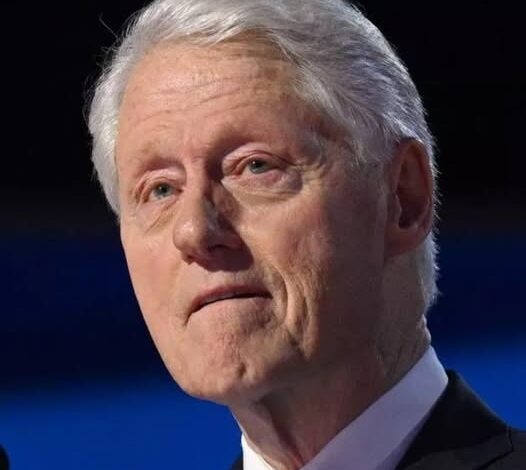Bill Clinton at 79: Health Resilience and the Broader Conversation on Aging Leadership

Former U.S. President Bill Clinton has spent decades under the public spotlight. From his time in office in the 1990s to his ongoing philanthropic work, he has been one of the most recognized figures in American and global politics. Recently, renewed attention has turned toward his health, as images surfaced suggesting the presence of advanced medical equipment among his travel belongings. While his office has not issued a statement, the photographs sparked conversation about Clinton’s long history of heart issues, his remarkable resilience, and the broader reality of aging leadership in the United States.
This article takes a closer look at Clinton’s health journey, his lifestyle reinvention, the symbolism of aging leaders, and the lessons his story offers to millions navigating similar challenges.
A Long Relationship with Public Service
William Jefferson Clinton, the 42nd President of the United States, entered the White House in 1993 as the first Baby Boomer president. His tenure was marked by significant economic growth, foreign policy initiatives, and social policy reforms. He left office in 2001 with one of the highest approval ratings of any modern president, even as his administration faced political controversies.
But Clinton’s public life didn’t end with his presidency. Through the Clinton Foundation, he focused on global issues such as health access, climate change, and poverty alleviation. His active role in international and domestic affairs kept him in the public eye long after leaving Washington, D.C.
Yet alongside his accomplishments, another narrative developed: his health.
A History of Heart Challenges
Clinton’s heart health became a public concern in 2004 when he underwent quadruple bypass surgery. At the time, doctors revealed severe arterial blockages, underscoring the seriousness of his cardiovascular disease.
Just six years later, in 2010, he required another intervention—this time the insertion of stents to open an artery that had re-narrowed. These procedures confirmed what medical experts and the public already understood: Clinton was at high risk for ongoing cardiac issues.
Since then, his medical history has been closely watched. Every public appearance, every trip abroad, and every photograph has carried with it speculation about his condition.
Reinventing His Lifestyle
Following his health scares, Clinton made sweeping changes to his lifestyle. He embraced a plant-based diet, publicly crediting it with helping him lose weight, manage cholesterol, and reduce cardiac risk. In interviews, he spoke candidly about switching from Southern comfort foods to vegetables, legumes, beans, and fruit.
“I want to hang around,” he once said, explaining his motivation to see his daughter Chelsea grow up and to enjoy being a grandfather.
His willingness to talk openly about diet and exercise inspired many Americans facing similar struggles. Clinton became more than just a political figure—he became a case study in how lifestyle changes can significantly affect long-term health outcomes.
The Broader Conversation on Aging Leaders
At 79, Clinton is part of a generation of leaders who have shaped U.S. politics for decades. He is the same age as former President Donald Trump and just a few years younger than President Joe Biden. Collectively, these figures highlight an ongoing national discussion about age, vitality, and leadership in high-profile positions.
Even though Clinton has largely stepped back from frontline politics, his health remains symbolic. It illustrates the reality that leaders—no matter how powerful—are not immune to the natural process of aging.
This symbolism matters. The sight of Clinton with medical equipment, whether precautionary or necessary, becomes a broader metaphor for a generation of politicians navigating the inevitable balance between vitality and vulnerability.
Why the Public Pays Attention
Clinton’s health is not just a private matter; it resonates with millions of Americans dealing with similar issues. Heart disease remains the leading cause of death in the United States, affecting families across all demographics. Clinton’s experiences with bypass surgery, stents, and lifestyle changes echo the challenges faced by countless individuals who struggle to manage cardiovascular conditions.
By seeing a former president confront these challenges, many find both caution and encouragement: caution, because even the most powerful are vulnerable, and encouragement, because Clinton has managed to live actively despite serious setbacks.
Public Reactions
Reactions to the recent images were mixed. Supporters expressed genuine concern and well wishes, praising Clinton’s determination and openness about health. Critics, meanwhile, framed the discussion in the context of aging leadership and political longevity.
Notable voices from across public life weighed in, some with solidarity and others with commentary on what Clinton’s health symbolizes for the Democratic Party and American politics more broadly.
But beyond partisanship, one message stood out: Clinton remains a figure of resilience, navigating the challenges of age while continuing to contribute where he can.
His Legacy Beyond Health
Though health concerns draw headlines, Clinton’s larger legacy remains multifaceted. He presided over an era of economic expansion, worked on international diplomacy, and later committed himself to humanitarian work. Through the Clinton Foundation, he has championed initiatives addressing HIV/AIDS, global education, and renewable energy.
Even when health limited his travel, he found ways to stay engaged—through writing, mentoring younger politicians, and appearing at key public events.